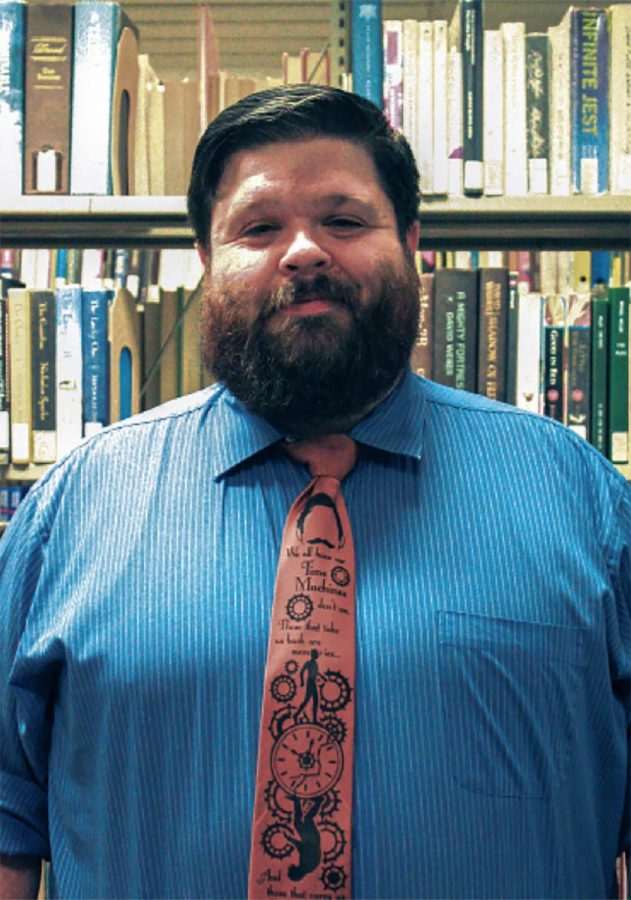Pioneer Public – Phillip Harrity
Photo by Lauren Clouser
August 28, 2018
When Phillip Harrity was a student at Point Park, he was originally interested in sports, arts and entertainment management, but it was his work study job at the university’s library that would land him his future career.
Harrity, the university’s current archival services coordinator, assisted the previous archival coordinator during his time as a work study student.
“I actually was the first work study student to work on the archives,” Harrity said.
Harrity said that his love of history, particularly that of Pittsburgh, was what inspired him to change his career path and accept the job in 2008 almost immediately after his graduation.
“I didn’t realize that working in the library was something I wanted to do until a little bit later,” Harrity said. “I’ve always had a passion for history, which kind of led one thing into the other.”
Harrity helps run day-to-day operations at the library, which includes training student workers and answering questions from students, alumni and other Pittsburgh news media.
Harrity is also in charge of the archives, which includes historical information about the university, the Pittsburgh Playhouse and the business training college that eventually developed into Point Park.
The archives contain photographs, oral histories, artifacts from fraternities and more.
“The archive itself has all the publications that have been done by the school,” Harrity said. “We have a lot of the scorecards that actually go back for the baseball, basketball and softball teams, we have yearbooks from the school and different artifacts that we are working on trying to put some of those on display.”
A large part of Harrity’s job entails working with the work study students to digitize these pieces of history so they can be more widely shared.
“We digitize items every day,” Harrity said. “I think we probably digitize at least 5,000 images per semester. And that’s nothing compared to everything we have that needs digitized.”
One of Harrity’s latest projects involved digitizing photographs from the university’s photojournalism department, which date back to 1960.
After he scanned the photos, Harrity explained that the most difficult part was finding information on them.
“The hardest part afterwards is actually bringing information about each one of those images because a lot of them are just negatives that don’t have any information on them,” Harrity said. “So then we have to do the research to find out what is in each picture, and that’s the more detailed intensive part that takes a little bit longer.”
After the images are digitized they are uploaded onto the website, “Historic Pittsburgh,” which is hosted by the University of Pittsburgh and is supported by local libraries, colleges and other organizations.
“It’s the kind of place to go if you want to do any local research of Pittsburgh,” Harrity said. “The information on there is huge; it’s a really great website.”
Harrity said that his favorite part of the job is sharing the information that he finds with others.
“It’s really just sharing the story with people,” Harrity said. “I think it’s one of the more gratifying parts of the job.”



















